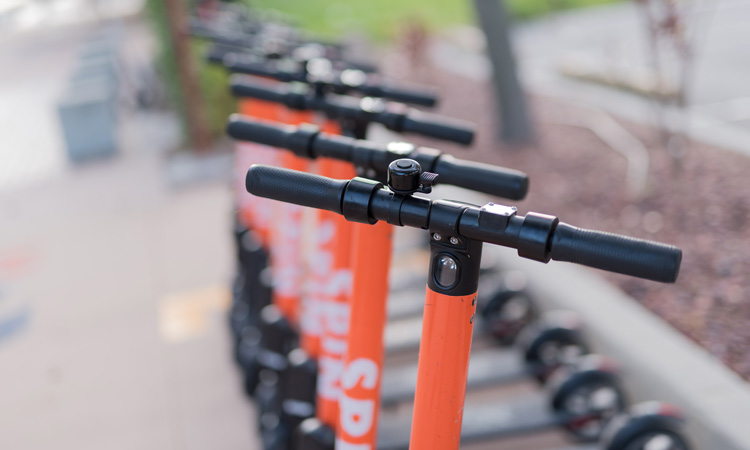Tackling common concerns about e-scooters head on
 Tackling common concerns about e-scooters head onSteve Pyer of Spin outlines some common problems e-scooters can cause and offers some core solutions for micro-mobility providers.
Tackling common concerns about e-scooters head onSteve Pyer of Spin outlines some common problems e-scooters can cause and offers some core solutions for micro-mobility providers.
Public hire e-scooters have been considered as a reliable, inexpensive and sustainable mode of transport for many years now around the world. In today’s post-pandemic world, they’re ideal for short journeys that are too far to walk and are a more attractive, socially distanced option compared to other modes of public transport.
The UK is one of the last European countries that is yet to make a decision on the legalisation of these vehicles and preparations for this are well under way. The Department for Transport’s (DfT) public hire e-scooter trials commenced 18 months ago and marked the first time people have been able to adopt a new mode of transport since the introduction of the car 100 years ago.
Today, there are many more platforms for local communities and organisations representing vulnerable groups to voice their concerns, which means key stakeholders can quickly address them. Discussions via these platforms typically centre around the safety of e-scooter riders and pedestrians, as well as issues with e-scooter parking and anti-social behaviour.
Recent research by road safety organisation RoSPA has highlighted the need for more e-scooter education within local communities. This includes clearer distinction between privately-owned e-scooters and public-hire e-scooters schemes run by companies like Spin, which are licenced by and working very closely with local authorities.
These issues are the reason why it’s imperative that we talk about the barriers to success and share learnings from our operations in Essex and Milton Keynes to improve public hire e-scooter schemes across the UK. Ultimately e-scooter rental companies are all working towards the same goal – to create a future in which e-scooters operate cohesively within communities and become integrated into local transport choices.
Ongoing e-scooter safety measures
In our experience over the last 18 months in the UK and from our international operations, we find that private and public hire e-scooters (and their riders) often get tarred with the same brush. But the stats tell a different story. They tell us that most accidents happen on unrestricted and unregulated privately-owned e-scooters which are illegal to ride on public roads in the UK. Of course, risks still exist with public hire e-scooters but the perception that they are one of the same needs to be changed.
E-scooter education is baked-in to public hire schemes. This includes multiple touch points that reiterate location, speed, age, parking and pavement restrictions and other technologies and best practices such as geofencing technology, in-app notifications and rider penalties to ensure safety rules are observed.
The safety of riders and pedestrians is the priority for all e-scooter rental companies, and we work with local authorities and residents to tailor schemes to their unique infrastructure and ensure safe riding and parking is adhered to.
With public hire schemes, safety measures take place well before a rider even sets off on a journey. Compulsory training modules are built into the apps used to unlock and pay for the scooters which cover all areas of riding and parking, including rider etiquette and awareness of vulnerable pedestrian groups.
This in-app training is supplemented with a more hands-on approach to safety education, through in-person demonstrations and safety courses which are a great way for riders to learn and ask questions all with a focus on reducing the risk of serious incidents. In our experience, running a mixture of full-safety courses, short ‘how-to-rides’ and proactive conversations around safety is the best way to encourage riders to engage with this important information. We urge every provider to host these sessions across the UK, with consistent content, so they are accessible to all riders.
https://www.civilengineering.ai/tackling-common-concerns-about-e-scooters-head-on/

Post a Comment